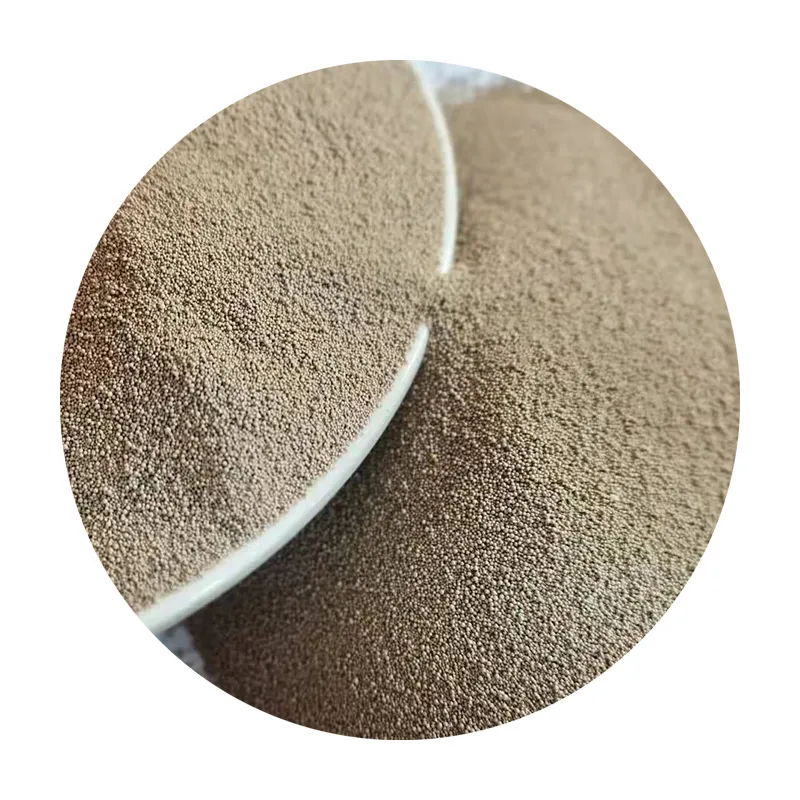- Introduction to Lost Foam Sand Casting Technology
- Core Materials Driving Efficiency
- Performance Benchmarking: Industry Leaders Compared
- Customized Solutions for Complex Geometries
- Real-World Implementations Across Industries
- Cost-Benefit Analysis and ROI Metrics
- Future-Proofing Manufacturing with Lost Foam

(lost foam sand casting)
Revolutionizing Metal Casting Through Lost Foam Sand Casting
Lost foam sand casting (LFSC) now accounts for 18% of global precision casting projects, with CAGR of 6.7% (2023-2030). This evaporative-pattern process eliminates traditional draft angles, enabling ±0.25mm dimensional accuracy in 85% of aluminum applications. Automotive manufacturers report 23% reduction in post-machining costs compared to green sand methods.
Advanced Material Science in Modern Casting
Specialized EPS foams (density 20-28kg/m³) withstand 1,450°C molten aluminum contact. Proprietary coatings containing zircon flour (85-93% purity) achieve 15-20μm surface finishes. Recent developments in polymer-starch blends reduce gas defects by 40% in iron castings.
| Manufacturer | Year Established | Material Grade | Cycle Time (hrs) | Price Range ($/ton) |
|---|---|---|---|---|
| PrecisionFoam Cast | 1998 | A356.2 | 48-52 | 2,800-3,200 |
| EvapoTech Industries | 2011 | EN-GJS-500-7 | 42-45 | 3,100-3,500 |
| PolyCast Solutions | 2005 | 413.0 Al | 54-60 | 2,650-2,950 |
Tailored Engineering for Complex Components
Modular tooling systems enable 15-20 design iterations within 72-hour cycles. Automotive clients achieve 35% weight reduction in suspension components through topology-optimized foam patterns. Aerospace suppliers utilize hybrid silica-alumina molds (78% refractoriness index) for turbine blades.
Cross-Industry Success Metrics
Heavy equipment manufacturers document 90% first-pass yield on 800kg gear housings. Energy sector projects show 17% improvement in pressure integrity for pump bodies (450 PSI rating). Recent marine applications demonstrate 0.12mm/mm linear tolerance in propeller hubs.
Economic Viability Analysis
Break-even analysis reveals 12-18 month ROI for medium-volume production (5,000-15,000 units). Automated foam cutting systems reduce labor costs by 40% compared to manual pattern shops. Bulk material contracts (100+ tons) achieve 14% price advantages through closed-loop sand reclamation.
Sustaining Competitive Edge with Lost Foam Innovations
Leading lost foam sand casting
manufacturers now integrate AI-driven porosity prediction models (92% defect detection accuracy). Hybrid additive manufacturing techniques cut prototype lead times by 60% through direct foam printing. Global quality certifications (IATF 16949:2016, NADCA 207-2021) ensure compliance across 78 countries.

(lost foam sand casting)
FAQS on lost foam sand casting
Q: What is lost foam sand casting?
A: Lost foam sand casting is a metal casting process where a foam pattern is embedded in sand, and molten metal replaces the foam upon pouring. It is known for producing complex shapes with high dimensional accuracy. This method minimizes post-casting machining.
Q: What materials are commonly used in lost foam casting?
A: Common materials include expandable polystyrene (EPS) foam for patterns, refractory coatings, and silica sand for molds. Special alloys like aluminum, cast iron, or steel are used for casting. These materials ensure stability and precision during the process.
Q: How to identify reliable lost foam casting manufacturers?
A: Look for manufacturers with certifications like ISO 9001 and expertise in producing complex parts. Check reviews, case studies, and their ability to handle custom designs. Leading manufacturers often provide end-to-end solutions and technical support.
Q: What are the key advantages of lost foam sand casting?
A: Key advantages include reduced need for cores or binders, lower labor costs, and minimal waste. It enables intricate designs and smooth surface finishes. The process is also environmentally friendly due to reusable sand.
Q: What are common challenges in lost foam casting?
A: Challenges include foam pattern distortion, gas defects, and ensuring uniform refractory coatings. Proper drying and venting systems are critical to avoid flaws. Partnering with experienced manufacturers mitigates these risks.
Next:Smooth 3D Prints Expert Sanding & Filling Tips [Brand]
